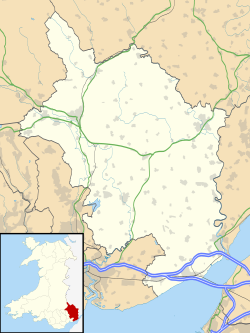| Church of St Stephen and St Tathan (or Tatheus) | |
|---|---|
 "a veritable treasure-house of Roman history" [1] | |
| 51°36′39″N2°46′07″W / 51.6107°N 2.7686°W | |
| Location | Caerwent, Monmouthshire |
| Country | Wales |
| Denomination | Church in Wales |
| History | |
| Status | Parish church |
| Founded | C13th century |
| Architecture | |
| Functional status | Active |
| Heritage designation | Grade II* |
| Designated | 19 August 1955 |
| Architectural type | Church |
| Style | Perpendicular |
| Administration | |
| Diocese | Monmouth |
| Archdeaconry | Monmouth |
| Deanery | Netherwent |
| Parish | Caerwent and Dinham |
| Clergy | |
| Vicar | The Rev'd Sally Ingle-Gillis (Priest-in-Charge) |
The Church of St Stephen and St Tathan, Caerwent, Monmouthshire, is a parish church with datable origins to the 13th century. It is believed to be one of the oldest Christian sites in the county, and possibly within Wales. The church is sited within the walls of the Roman town. It remains an active parish church and a Grade II* listed building.
